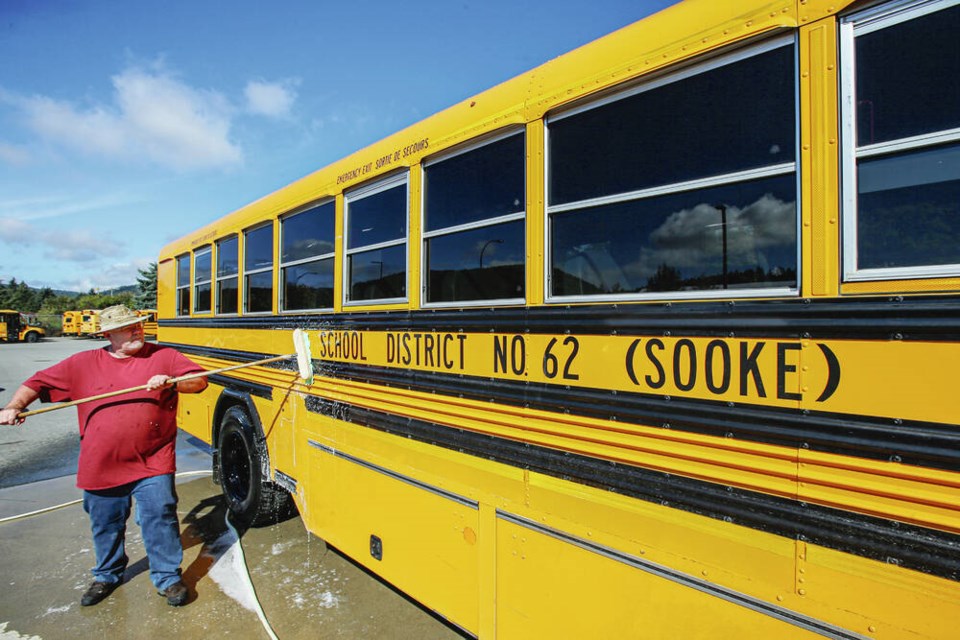A new priority system for bus service in the Sooke School District based on school-catchment areas is intended to be more efficient but has left some families scrambling.
About 4,000 students are bused in the fast-growing district each day, said superintendent Scott Stinson.
Because of its growth, the district adopted a change in January that prioritized transportation for students who live within the catchment areas for their schools, he said. Previously, the system ran on a first-come, first-served basis.
“So we began sending communication out to families at that time,” Stinson said. “We did as much as we could to provide that information, but I recognize that it still causes challenges when it actually comes to fruition for families.”
The changes needed to be made because of the addition of new schools as the district grows, he said.
“When we were a smaller school district with a single secondary school in the Belmont Zone, we were busing families all over the school district,” Stinson said. “So as we’ve continued to grow and we’ve added new schools, including Royal Bay Secondary, it’s become much more difficult to be able to do that and provide the service efficiently.”
In some cases, students would be waiting for an hour after school for a bus, or they would have to ride the bus for over an hour because it was running to stops around the district, he said.
Catchment boundaries for some schools have also been updated.
Stinson said there are exceptions in the new bus policy, such as for students enrolled in courses that are offered at only one school, and in cases where a family’s catchment school is full.
“But where a family has made a choice to attend an out-of-catchment school, it’s difficult for us to be able to continue to provide that service and efficiently provide service to the others that need to get to their neighbourhood school.”
Andrew Firth said his son, now in Grade 11, previously took the bus to Belmont Secondary, even though it was out of catchment, since he was there to attend the French-immersion program. But that changed this year when he switched to the English program.
Firth said the decision to stay at Belmont was made in concert with the district, since his son had been at the school for two years. “We had many conversations with the school and the district staff last year to find the best option for him,” he said in an email.
Firth said he wasn’t aware of how that would affect his son’s ability to use bus service until two weeks before school started. Now instead of a $25 fee for a year of school district bus service, the family is paying $45 a month for a transit pass.
Melissa Da Silva, president of the Sooke Parents’ Education Advisory Council, said some parents have reached out with concerns — including French-immersion parents who hadn’t realized their children were among the exceptions to the new regulations.
She said parents with busing issues can contact the advisory council so it can work with the district on their behalf.
Stinson said families on existing routes will be accommodated if possible. But the district’s student population is up by close to 650 kids this year, so the bus system is full managing the in-catchment students, he said. “We’ll do it if we can, but the likelihood is that our buses are going to be full as it is.”
This year’s growth in student numbers could be one of the largest ever and might raise the district’s total to over 12,000.
With enrolment and routes still being fine-tuned, busing numbers won’t be finalized until about the end of September, Stinson said.
He said the district chooses to provide busing to ensure families have access to schools, even though it’s not required to under the School Act. “We don’t want transportation to be a barrier for them to get to their neighbourhood school.”



